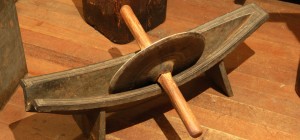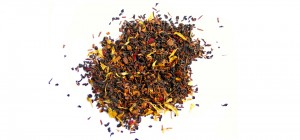 Using carefully designed herbal therapies is a safe and effective way to restore and maintain optimum health. It is one of the most ancient forms of treatment.
Using carefully designed herbal therapies is a safe and effective way to restore and maintain optimum health. It is one of the most ancient forms of treatment.
At Healthy Living Acupuncture, Andrew Appello treats the whole person, not the disease. Recommending herbal treatments, either alone or in conjunction with acupuncture and other healing modalities, will help to stimulate and balance the body’s innate healing mechanisms. Each patient gets an individualized treatment customized to his or her unique constitution and symptoms. Using a specifically selected combination of herbs to restore and maintain health is an ancient art that goes back millennia. A classic Chinese medical text, the Shang Han Lun (circa 200 A.D.), describes herbs and treatments that are still used today wherever Traditional Chinese Medicine is practiced.
After carefully selecting from among approximately 1800 available herbs in the Clinical Herbalist’s pharmacopoeia, your formula may be given to you in various forms:
- Bulk: These are dry herbs blended together. You will prepare these as a tea or cooked decoction.
- Granules: Using freeze-dried granulated extracts that are mixed together, you will dissolve a couple of spoons of the herbal granules in a small amount of warm water.
- Tinctures: These are concentrated alcohol-extracted herbs. The extract is mixed into a small amount of water or juice.
- External preparations: Occasionally, herbal liniments, plasters, creams and poultices are used topically to treat skin conditions, strains, bruises, injuries and other external conditions.
- Pills and capsules: Generally not used, because of poor digestion and absorption. They also cannot be customized to fit the individual’s needs.
Herbal Therapies that Andrew Appello employs at Healthy Living Acupuncture include:
Traditional Chin ese Herbal Therapy: Chinese herbal therapies and acupuncture are complimentary therapeutic modalities that are often used together to enhance the treatment. Herbs are classified according to their energetic qualities, functions and the different organs, meridians and disharmonies they address. Herbs are used in different combinations and quantities to address the individual’s needs.
ese Herbal Therapy: Chinese herbal therapies and acupuncture are complimentary therapeutic modalities that are often used together to enhance the treatment. Herbs are classified according to their energetic qualities, functions and the different organs, meridians and disharmonies they address. Herbs are used in different combinations and quantities to address the individual’s needs.
Kanpo Japanese Herbal Therapy: Similar to TCM herbal therapy and based upon the theories of the Shang Han Lun, this form places emphasis on abdominal diagnosis. Set traditional formulas are used; an exact formula is chosen to fit the manifestation of dysfunction.
Ayurvedic Herbal Therapy: Translated from the Sanskrit to mean “science of life”, this ancient Indian system, over 5000 years old, aims to purify toxins (ama) and balance the three doshas (vata, pitta and kapha). It uses traditional formulas that have been developed throughout Ayurveda’s long history.
Western Herbs: This type of herbal therapy has its roots with the Unani-Tibi physicians of the Middle East and the ancient Greco-Roman physicians. American and European physicians began refining these practices as early as the 1800’s. Some drew upon Native American wisdom in herbal healing, which believed that individual plants could be matched to an ill patient and stimulate healing to the mind, body and spirit. Many movements of herbal medicine contributed to today’s Western herbal therapy practice and include the Thompsonians, Physio-Medicalists and the Eclectics. The formulas in Western herbal therapy are matched to specific complaints as well as underlying systemic balances.
Herbal therapy combines long-standing insights into health and healing with modern research and is practiced widely around the world today. The synergy of the various herbs working together to ease disharmony is powerful, whether used alone or in conjunction with other natural healing modalities.
